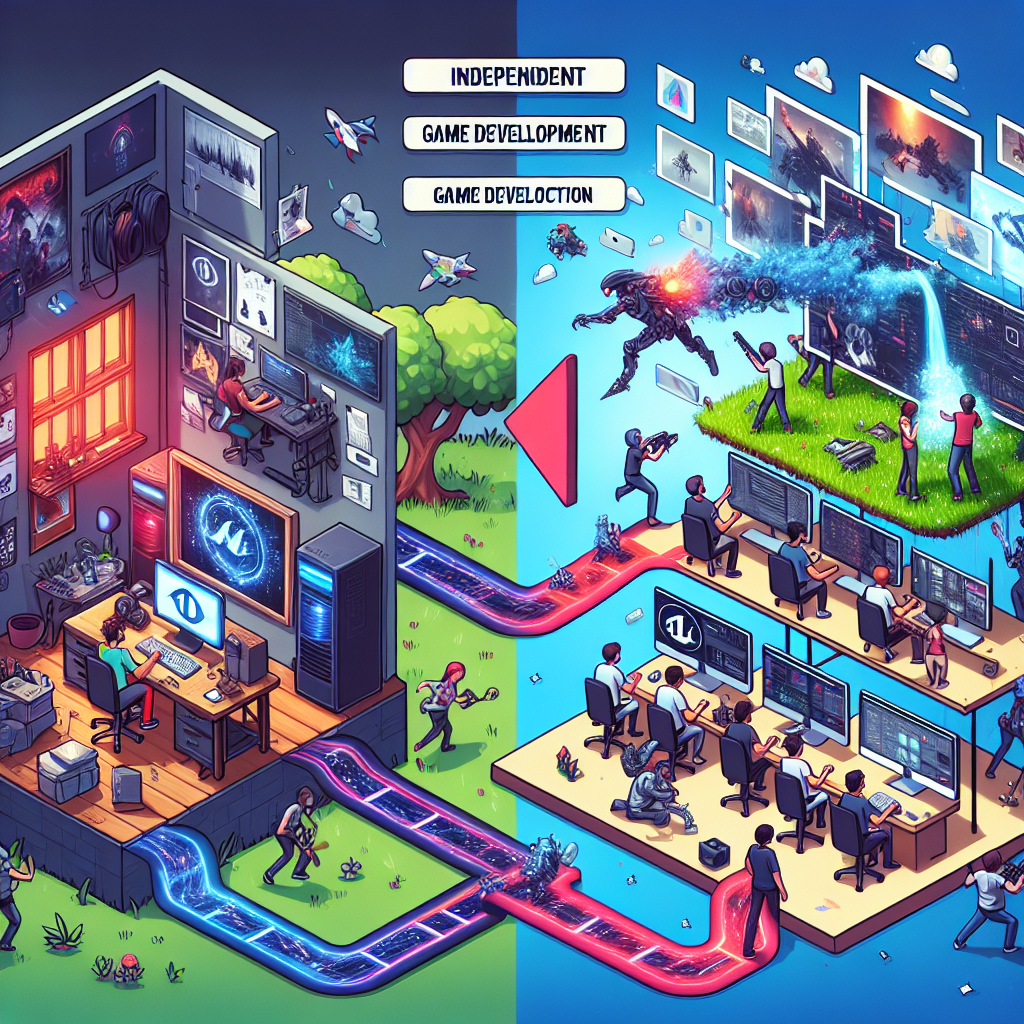From Indie to AAA: Navigating the Game Development Pipeline with Unreal Engine
As the gaming industry continues to evolve, developers find themselves with unprecedented opportunities to create immersive worlds and compelling narratives. Among the tools available, Unreal Engine stands out as a powerful game development platform that caters to both indie creators and AAA studios. This article explores the journey from indie game development to AAA production using Unreal Engine, highlighting key features, best practices, and crucial stages of the pipeline.
Understanding the Game Development Pipeline
Before diving into specific tools and techniques, it’s vital to understand the game development pipeline. Typically, this pipeline consists of the following stages:
- Concept and Pre-production
- Design and Prototyping
- Production
- Testing
- Launch
- Post-launch Support
Each of these stages plays a critical role in the success of the game, and Unreal Engine provides robust tools and features to streamline each phase.
Stage 1: Concept and Pre-production
The initial phase is largely about ideas and feasibility. Indie developers often prototype their concepts using Unreal Engine’s Blueprint Visual Scripting, which allows for rapid iteration without heavy coding burdens. This feature empowers developers to test gameplay mechanics quickly and make necessary adjustments based on immediate feedback. Importantly, this phase sets the stage for project scope and budget, which are especially critical for indie studios with limited resources.
Stage 2: Design and Prototyping
Once the concept is solidified, developers move on to design. Unreal Engine’s Level Design tools enable creators to build diverse environments, while its Asset Marketplace provides easy access to pre-made models, animations, and textures. This is particularly beneficial for indie developers who may lack extensive art resources. Furthermore, the Engine’s built-in modeling and UV tools allow teams to create and manipulate assets directly within the environment, reducing the need to switch between applications.
Stage 3: Production
This is where the heavy lifting occurs. For indie studios, managing a team of multi-skilled developers often becomes necessary. Unreal Engine’s collaborative features, like Source Control integration, allow multiple users to work seamlessly on the same project. Advanced features, such as Foliage and Terrain tools, empower developers to create vast, open worlds quickly and efficiently, crucial for AAA games that seek to immerse players in expansive environments.
Optimization becomes critical at this stage; developers must ensure that their game runs smoothly across various platforms. Unreal Engine’s profiling tools provide in-depth analysis of performance, making it easier to identify and solve bottlenecks.
Stage 4: Testing
In a landscape where user experience is paramount, rigorous testing is non-negotiable. Unreal Engine offers automated testing frameworks that help ensure that core gameplay mechanics function as intended. For indie developers with smaller teams, this automation can drastically reduce the time spent on quality assurance. Integration with platforms like Steam allows for beta testing phases, enabling developers to gather real-world feedback and make necessary adjustments before the final launch.
Stage 5: Launch
As the production phase culminates, the focus shifts toward launch logistics. The Unreal Engine offers seamless build options across multiple platforms, aiding developers in achieving wide market reach, whether via PC, console, or mobile. Furthermore, the structured deployment processes within Unreal simplify the transition from development to public release.
Stage 6: Post-launch Support
After launching, the journey doesn’t end. Monitoring community feedback and updating the game is crucial to maintaining player engagement. Unreal Engine allows developers to implement post-launch content updates, patches, and expansions efficiently, thanks to its modular asset management system.
Transitioning from Indie to AAA
The skills and experiences gained from indie development can serve as strong assets for transitioning to AAA game development. Here are a few key points for developers making this leap:
-
Building a Portfolio: Indie projects serve as a portfolio that showcases your creativity and technical skills.
-
Networking: Participate in game jams, conferences, and forums. Building relationships within the industry can open doors to AAA opportunities.
-
Learning Advanced Skills: As you shift to AAA, investing time in more complex aspects of Unreal Engine—like C++ programming, complex animations, or intricate system design—can help you land a position with larger teams.
- Understanding Team Dynamics: Work in a small indie team can cultivate an understanding of versatile roles, preparing developers for collaborative efforts needed in larger projects.
Conclusion
Navigating the game development pipeline using Unreal Engine offers an exciting journey for developers from all backgrounds, whether they are crafting their first indie title or contributing to a AAA blockbuster. With its powerful tools and vibrant community, Unreal Engine continues to democratize game development, empowering creators to bring their visions to life. Embracing the evolution from indie to AAA isn’t just a career step—it’s an exciting adventure that reflects the broader innovation and creativity within the gaming industry.




